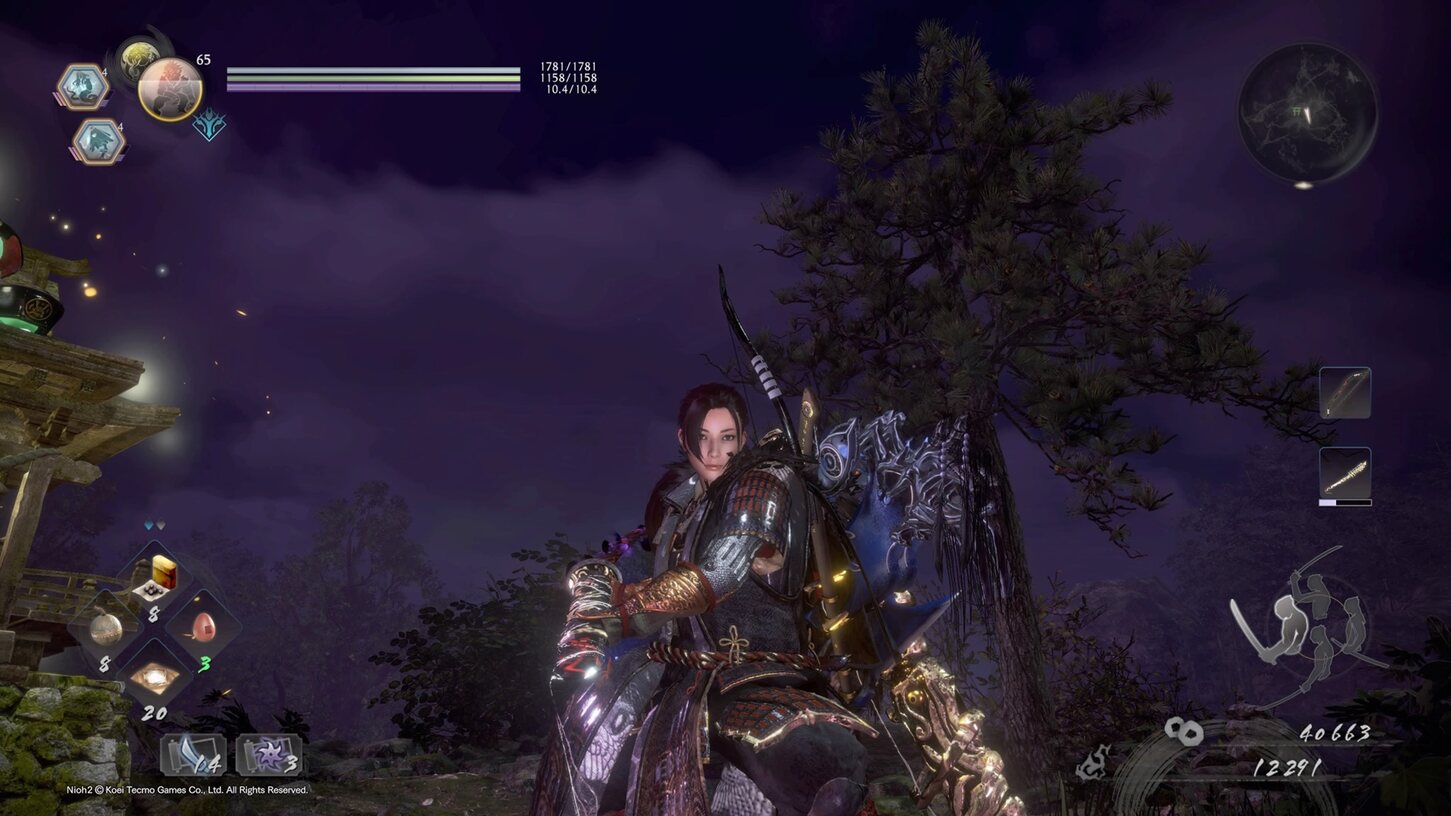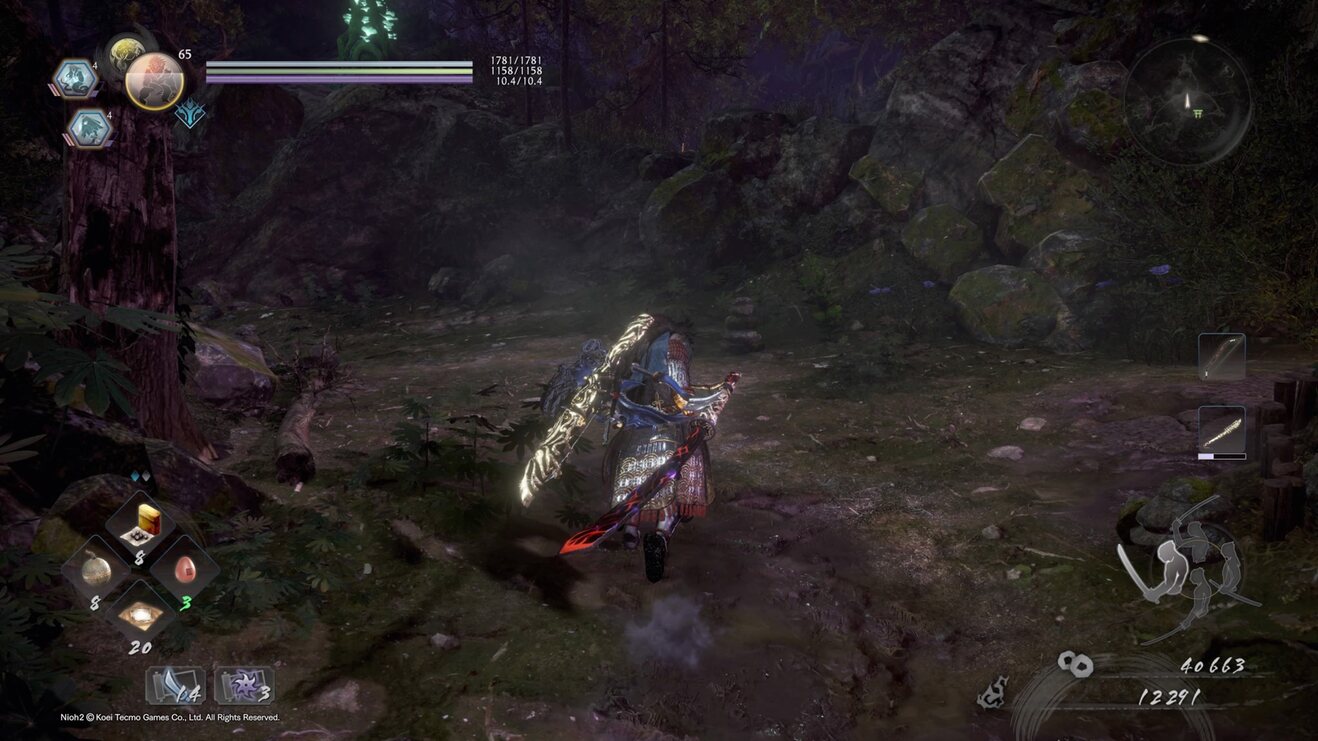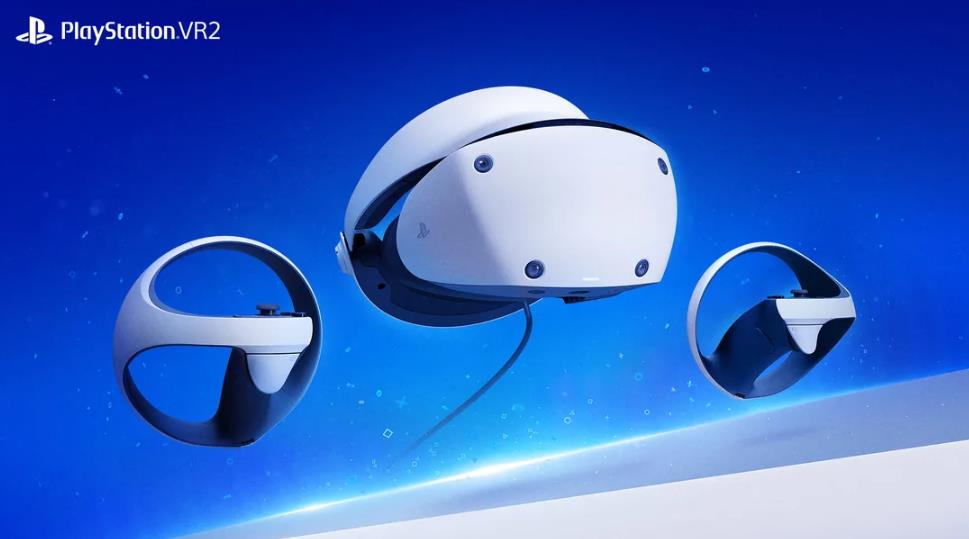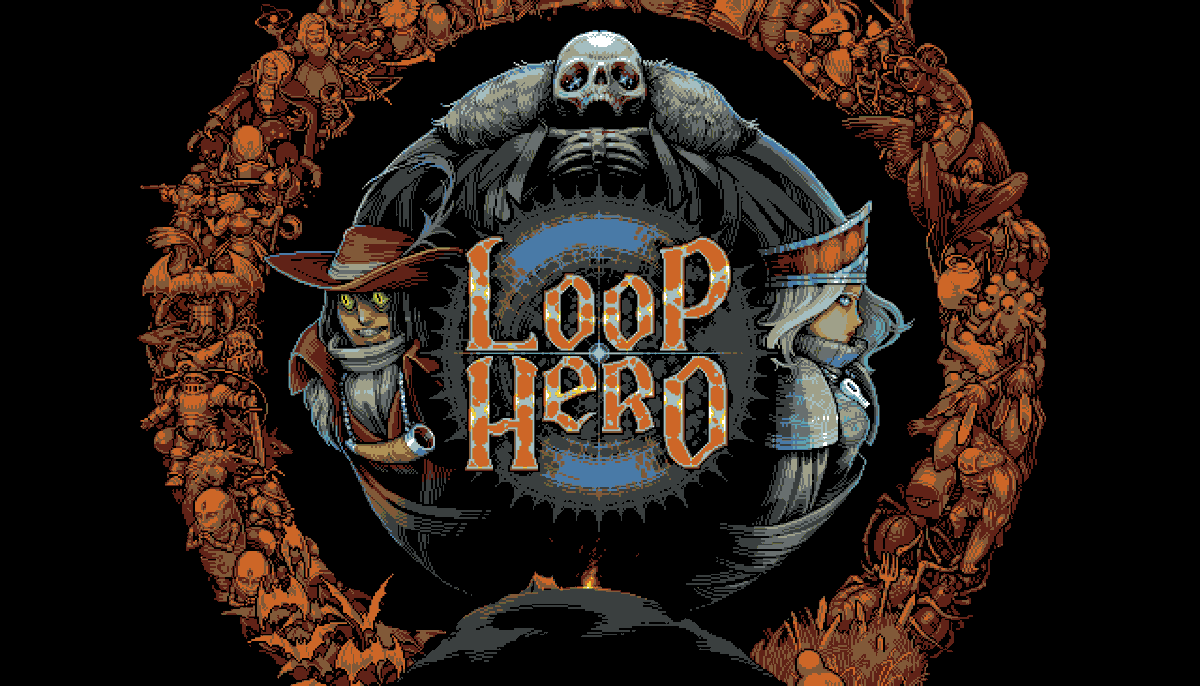One More Look: The Nioh Collection – The best way to play Nioh
I was reluctant about The Nioh Collection as it’s been established that I don’t like Souls-like games. I played Nioh as a demo back in 2017 and then was reminded of the bad aftertaste Demon’s Souls imparted, so I passed on it.
Don’t get me wrong, I’ve always been willing to try titles from this sub-genre. Bloodborne notably became an outlier where I actually accepted the challenge, only because of the cosmic horror elements present throughout its steampunk packaging.
To give Nioh another shot is a tall order, but if I was able to love Control with a PS5 makeover, why not Nioh? It’s the season of love and I’m willing to give this game another shot. Maybe I can finally understand what makes this game such a draw for the fans of the sub-genre.
A setting every next-gen game should have
From Devil May Cry 5: Special Edition to Control Ultimate Edition, so much emphasis is placed in the graphics and performance modes that the developers assume that all of us can afford the latest TV set capable of the best settings. The Nioh Collection understands that most of us went through hoops to secure our PlayStation 5 and makes things easy for us out of the box.
Before anything else, there are a few things to know about The Nioh Collection:
- Both base games are backwards compatible for the PS5, but The Nioh Collection will have far more significant upgrades, especially with loading times.
- There is a 4K mode, a 120fps mode, and a PlayStation 5 Console Mode. The first two settings are as described, but the PlayStation 5 Console Standard Mode basically locks fps to 60 with dynamic resolution and additional visual details such as better shadows and longer draw distances, among others.
Enter the PS5 Console Standard Mode, which goes for dynamic resolution but offers the most balanced way to play the game, giving players stunning visuals while maintaining a steady 60 frames that is a god send for titles that benefit greatly from this frame increase.
For the untrained eye, there’s hardly any difference with the 4K mode and the PS5 mode. More technically trained eyes will probably notice slight differences here and there, but for the normal player, it is almost essentially the same.
As a comparison, I’ve played the Nioh PS4 version on the PS5’s backwards compatibility, and the Standard Mode feels like a PS4 Pro version with no frame rate dips. On my 1080p TV, it’s the smoothest I’ve seen any PS5 game played with Control Ultimate Edition in a very close second. It adapts to its ultra fast-paced gameplay, and there’s really no other way to play the game once you’ve had a taste of the new hardware.
If you do own a 4K TV, prepare yourself for the best of both worlds as many games that had a performance upgrade in the PS5 (looking at Control and Devil May Cry 5) either tap out at 4K/30 or 1080p/60 for their respective graphics and performance modes. The Nioh Collection, for the most part, succeeds with giving a 4K 60fps experience with some dips, and Team Ninja have done fantastic work for this remaster.
Both Nioh and Nioh 2 look absolutely great on the PS5, especially with the higher level weapons and armor sets equipped. You can see all the intricate details if you look close enough, but more than that, the smooth gameplay really shines.
Nioh 2, in particular, handles the 4K mode pretty well, with some occasional frame dips that should generally be unnoticeable. The difference with the PS5 standard mode though is that while 4K mode has better resolution overall, the PS5 standard mode makes up for it with rock solid 60fps and higher visual settings in other parts like draw distance and shadows. Long story short, the PS5 mode is really the way to go when playing this game.
While I don’t have a 120fps set to test out the highest performance mode option in this game, it is safe to assume that for a fast-paced Team Ninja title like this, it would be bliss at the expense of 4K resolution.
Nioh 1 Remastered — An Entry Point For This Genre
So let’s talk about the elephant in the room. Why should you play this game? Why did I play this game? It’s all about the crushing difficulty, right? After playing through the prologue, it’s not as bad as I thought it would be.

When I was introduced to Nioh, back in 2017, I played the demo version, which had this tutorial mode where you get a dummy to whack to build up your confidence and then cool, let’s try out the real thing and some goddamned yokai hits you for 4000 damage and laughs like Nelson from The Simpsons leaving you traumatized and very dead.
The game is a lot more forgiving than that, as it actually gives you a couple of chances to ease into the game play. You start out with the prologue as William, a pirate held in The Tower of London waiting for his execution. As you make your way out of the tower, it allows you to experience the game play for yourself. You collect some gear and face off against manageable enemies with the option to go for the more challenging armored types.
You’re going to die a few times, sure, but you get to keep your gear and you can try out harder areas and collect better gear to face off against a two-pronged boss that is your executioner, Derrick. Once as a human, and then as a Yokai. The good news is that you’ll just need to chip away Derrick’s Yokai health to about a third before you go into a cut scene and finish the prologue.
Then you get an option to get the tutorial mission, which is akin to the experience I had with the demo. Finally, when you start the game, they place you near a shrine where you can grind and level up in order to actually feel capable of traversing harder areas. While some hardcore players might think it’s hand holding, I argue that this is accessibility at its finest.
I feel this was a better way of easing a newcomer into a Souls-like series instead of the sadistic ways any of the Souls-like games start you off with such as Demon’s Souls and Bloodborne, where they throw you into the fray and have some random enemy just tear you to shreds showing that they mean business. Demon’s Souls and Bloodborne doesn’t even let you spend your hard earned souls until you murder your first boss. Thanks Nioh for being an inviting club owner!
Nioh 2 Remastered — Quality of Life Enhanced
I tested Nioh 2 Remastered and see if they ease you into the game like its predecessor. It is a prequel to the first game, prefaced by telling a fable of a horned man who was welcomed to a village and was slowly alienated until he became aggressive and somebody killed him because he was different. I’d get angry too if I was being harassed for how I looked.
Unlike the first game where you got assigned a named avatar, you get a fully customizable character for a change. You get to choose your load out like the first game, but instead of a tutorial mission, you get a cave where you could try out every weapon out before settling for a final set. If you started out with this title first, that felt like a good deal, where in the first game you were given a choice of weapons without trying them out.

When you start out, in Souls-like fashion, find yourself in a Yokai infested cesspool with only a shrine to guide you and of course some free gear if you check Boons. Otherwise, as John McClane yells, “Welcome to the party, pal.” At least in the first game, they warm you up with some humans before throwing some yokai your way. Some people have it easy. Or so I thought.
Controls in Nioh 2 are a lot more responsive than Nioh 1. It seems that the haptic feedback and adaptive triggers are lot more sensitive with Nioh 2 especially when you’re shooting. In Nioh 1, I found that the adaptive trigger response is a little weak. It’s much easier to pull off combo attacks and the action is much more fast-paced in this second game. Finally, burst counters and spirit attunement improves quality of life by making boss encounters a lot more manageable. I was able to defeat Mezuki quicker than Onryoki in Nioh 1. Then you realize that both games attempt to make it accessible in their own ways.
The great thing also about having the complete DLC available besides the fact that every single piece of content could be accessed for both Nioh 1 and Nioh 2 remastered; you have access to all the fantastic equipment to give you a bit of an edge against most of the starter enemies. While you may argue that it’s better to progress organically with the loot that you collect, give us newbies a break here! It’s definitely a lot of value for a complete edition for both games, but just as a side note, only the PS4 Nioh 2 receives a free upgrade for the PS5 along with the cross save capabilities.
Fast-paced combat, fast deaths
The biggest thing that I liked about both Nioh and Nioh 2 is the fact that it’s a fast-paced action game. It is quicker than Demon’s Souls and Dark Souls, where I feel that every movement my character makes is encumbered in some way. Unless you’re equipping a heavy weapon such as an axe or even a spear, many weapon types have considerable increase in attack speed that I seem to like.
Levels still allow you to map out paths from the starting point to checkpoints (Shrines) where you can power up your character, gain skills, and free up passageways to make it easy for your next round. In true Souls-like fashion, at least it doesn’t force you to restart from the very beginning. While the difficulty is punishing, it is fair in that sense.
However, one thing that I noticed just like when I played Bloodborne is the way the stamina meter (here it is the Ki meter) punishes you when you button mash. Fighting bosses and even hordes of enemies could be defeated by a well aimed strike or death can be averted by a single block or a well timed dodge. While you do have the faster paced movement, you’re still punished by bad gaming habits picked up over the years. If you don’t master the trademark Ki Pulse feature that the game employs, expect a tougher time against the Yokai.
So expect to die, and expect to die a lot. Playing The Nioh Collection on the PS5 is highly recommended with its super fast SSD drive that speeds up load times so you can get up and try again. Playing the backwards compatible version will get you playing in around 10 seconds or so but if you’re playing the “new” PS5 version, loading is essentially gone, taking around 2-3 seconds or less.
Averaging about a few deaths at a time really clues you into learning how to dodge, punish, and strike. It creates tedium but succeeds in this heavy-handed trial and error style of game play, which gives a rush of satisfaction to attempt the next challenge.
In a way, whether it is the catharsis seen in games like Little Nightmares where you barely escape with your life or in Control where completing challenges unlocks more psychic abilities that get you closer to godliness; the same level of catharsis is allotted upon defeating difficult Yokai and bosses.
So in a way, yes it’ll depend on the player’s personal threshold whether or not you will continue or quit this type of game. Nioh gives you the opportunity to bask in this world especially the first few levels where they warm you up with some human targets before throwing yokai at you. Nioh 2, however, lets them run amok, but the difficulty curve in the second game is a much smoother slope thanks to the new features like the burst counter.
The saddest part is the personal realization that these games are technically competent and even worth playing in their own right. It is the fact that as we get older, we begin to degrade in patience, reflex, or both. This becomes an impediment to fully enjoying these games that are technically challenging but utterly satisfying.
While the Nioh series does impart some narrative beats that motivate you along into playing it, the challenge really is how much are you willing to allow yourself the time to keep trying these bosses before moving on? It’s the question you will keep asking yourself after your 50th death with Onryoki.
What We Liked:
- Even with the 4K and 120fps modes, the PS5 Console Standard Mode provides the most stable next-gen experience.
- Faster loading times to offset the oh-so-many times you’re gonna die.
- Both games attempt to make the Souls-like subgenre accessible in their own ways.
- All the DLCs are available giving you the complete experience.
What We Didn’t Like:
- You’re still gonna die. A lot. Accept that there will be a lot of trial and error involved.
- Nioh 1 Remastered has no free PS5 upgrades for the PS4 owners of the game.
- The crushing realization that Souls-like games are actually good, but your lack of skill and patience prevents you from fully enjoying it.
Verdict: Buy it!

As a newcomer to the Nioh series, the collection is of good value because not only do you receive the latest version of both games, you also have access to all the DLCs as well as the improved visuals and better quality of life features as part of your entry to this world. While previous owners of Nioh 2 on the PS4 has access to cross-saves and the free upgrade to the PS5, Nioh owners have to purchase the game at full price, which isn’t fair for a four year old game (it was given free at PS Plus at one point).
However, the PS5 is hands-down the best place to play this collection. With the improved performance, visuals, and all the content available, it’s a great starting point for everyone new to the genre. I also recommend this game as it is as fast-paced as Bloodborne and while the difficulty might not be everyone’s cup of tea, Nioh eases you into the world before daring you to give it your all.
If you decide to tackle either game, I wish you luck. It’s a difficult but rewarding experience that many of us won’t be able to fully reach, but we could agree that it is a fantastic game elevated further by the next-gen hardware provided by the PlayStation 5.
*The Nioh Collection was reviewed on a PlayStation 5 via a review code provided by the publisher.








